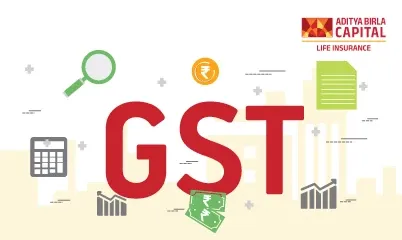Buying a property in India is an exciting journey, but it also involves some important legal and financial steps. One of these is dealing with Form 26QB, a crucial form for tax compliance in property transactions. It might seem a bit complex at first, but don't worry, it's not as complicated as it sounds. Understanding Form 26QB is essential for anyone buying or selling property in India, as it ensures that you're on the right side of tax laws.
What is the 26QB Form?
Are you planning to buy a property and hearing a lot about Form 26QB? Let's simplify it for you. Form 26QB is a form used for the tax deducted at source (TDS) on property transactions. Whenever you buy a property, a certain percentage of the amount has to be paid as tax to the government. This form is how you tell the government about this tax payment. Think of it as a way of keeping everything transparent and above board with the tax authorities.
Essential Elements of Form 26QB
Filling out Form 26QB might sound daunting, but it's pretty straightforward once you know what's needed. Here are the key elements you'll need to include:
-
Personal Details: This includes basic information like your PAN (Permanent Account Number), address, and the seller’s PAN.
-
Property Details: You’ll need to provide the complete address of the property, along with details like the date of agreement, the total value of the transaction, and the amount paid.
-
Payment Details: This part covers the amount to be paid as TDS, the date of payment, and the bank through which the payment is made.
Remember, accuracy is key here. Double-check all the details to ensure there are no errors.
When Should Form 26QB be Filed?
Timing is crucial with Form 26QB. This form should be filed within 30 days from the end of the month in which the TDS was deducted. Let’s break it down with an example. Suppose you deducted TDS on the property purchase on the 15th of January. In this case, you should file Form 26QB by the end of February.
It’s important not to miss this deadline because delaying can lead to penalties. After filing, you also need to provide the TDS certificate to the seller, which is Form 16B, within 15 days of filing Form 26QB. This certificate is proof that you’ve deposited the tax with the government.
Requirements Associated with Form 26QB
Section 194-IA of the Income Tax Act, 1961, outlines specific regulations for the purchase and sale of immovable properties like land, buildings, etc. The key points include:
● TDS Deduction Rate: When buying immovable property, the purchaser is required to deduct TDS at a rate of 1% from the transaction value at the time of purchase.
● Exemption Threshold: No TDS deduction is necessary if the property's value is less than ₹50 lakh.
● No Need for TAN: Purchasers are not required to obtain a Tax Deduction Account Number (TAN) for TDS remittance to the government. However, it's mandatory to provide the Permanent Account Number (PAN) details of both the buyer and seller when TDS is deducted.
● Requirement for Multiple Form 26QBs: In transactions involving multiple buyers or sellers, separate Form 26QBs are needed for each party involved.
● TDS on Installment Payments: If the property payment is made in installments, TDS should be deducted on each installment on a pro-rata basis.
● Issuance of Form 16B: After TDS deduction and payment, the buyer must issue Form 16B, a TDS certificate, to the seller within 15 days. In cases involving multiple buyers, TDS must be divided equally and deducted at the same rate by all buyers.
● Agricultural Land Exception: TDS deduction is not applicable if the immovable property in question is classified as agricultural land.
Conditions for Agricultural Land Non-Exemption:
Please note, land will not qualify as agricultural if it meets the following conditions:
It is located in an area with a population exceeding 10,000, under the jurisdiction of a Cantonment Board or Municipality.
The land is situated within specified distances from the boundaries of the aforementioned localities.
| Distance from Cantonment Board or Municipality | Population |
|---|
| Up to 2 kms | Minimum of 10,000 but not exceeding 1,00,000 |
| Up to 6 kms | Minimum 1,00,000 but exceeding 10,00,000 |
| Up to 8 kms | Above 10,00,000 |
These guidelines under Section 194-IA aim to streamline the tax deduction process on transactions involving immovable property, ensuring compliance and transparency in real estate dealings.
How To Download Form 26QB?
Step 1: Navigate to the TIN-NSDL website. Look for the ‘Services’ section and select ‘TDS on Sale of Property’.
Step 2: On the page that opens, proceed to click on ‘Online form for furnishing TDS on property (Form 26QB)’ found towards the bottom.
Step 3: You'll be taken to a new page. Here, enter all the required details into the form. Once completed, make sure to review and then submit the form to confirm your information.
Step 4: Upon submission, an acknowledgement number will be generated and displayed on your screen. It's important to note this number down or save it as it will be useful for tracking the status of your submission or for any future queries.
Step 5: If you need to print the form, simply select the ‘Print Form 26QB’ option.
How to Fill Form 26QB Online?
Filling out Form 26QB online is not only convenient but also saves a lot of time. Here's a step-by-step guide to do it:
Step 1: Visit the TIN-NSDL Website: Go to the official TIN-NSDL website and find the section for Form 26QB.
Step 2: Choose the Correct Form: Make sure you select the correct form for tax deducted at source on the sale of property.
Step 3: Fill in the Details: Enter all the necessary details. This includes PAN numbers of both buyer and seller, contact details, address of the property, transaction details, and the TDS amount.
Step 4: Make the Payment: After filling in the details, you can proceed to make the TDS payment. This can be done via net banking or debit card.
Step 5: Confirmation: Once the payment is successful, you'll receive a confirmation and a challan containing the CIN (Challan Identification Number). Keep this safe, as it's an important document for future reference.
Step 6: Generate Form 16B: After filing Form 26QB and making the payment, you need to download Form 16B from the TRACES website and provide it to the seller as proof of TDS submission.
Remember, you don’t have to complete this in one go. The website allows you to save your progress and come back to it later if needed.
Penalty Charges Associated with Form 26QB
| Interest on | Calculation |
|---|
| Not deducting TDS | 1% per month from the date you were meant to deduct TDS until the day you actually do it. |
| Not depositing the TDS with the government | 1.5% per month from the day TDS is taken out to the day the government is paid. |
When and How Much TDS on the Property Sale is Required?
When you're involved in a property sale, it's essential to know about the Tax Deducted at Source (TDS). If the property value exceeds ₹50 lakh, the buyer is required to deduct 1% of the total transaction value as TDS. This needs to be done at the time of paying the seller. For example, if you’re buying a property worth ₹60 lakh, you need to deduct ₹60,000 as TDS and pay the seller ₹59.40 lakh. It's a legal requirement, and adhering to it ensures that you're following the tax rules.
How Should Tax Deductions be Submitted on Form 26QB to the Government?
Submitting the deducted tax to the government via Form 26QB is a straightforward process:
-
File Form 26QB: As soon as the TDS is deducted, fill out Form 26QB online on the TIN-NSDL website. Ensure all details are accurate to avoid any discrepancies.
-
Make the Payment: After filling the form, proceed to make the payment. This can be done using net banking or debit card facilities. The payment should be made within 30 days from the end of the month in which the TDS was deducted.
-
Generate and Issue Form 16B: Once the payment is made, a challan will be generated. Using this challan number, you can then download Form 16B from the TRACES website. Form 16B is the TDS certificate that needs to be provided to the seller. This acts as a receipt and proof that the tax has been duly deposited with the government.
By following these steps, you ensure compliance with tax laws, making your property transaction smooth and legally sound.
What Criteria Does Section 194IA of the Income Tax Act Require?
Section 194IA of the Income Tax Act plays a vital role in property transactions. It outlines specific criteria for Tax Deducted at Source (TDS) on property sales. Here's what it mandates:
- Applicability: This section applies when the sale value of a property (other than agricultural land) exceeds ₹50 lakh.
- TDS Rate: The buyer must deduct TDS at the rate of 1% of the total sale consideration.
- No PAN, Higher TDS: If the seller doesn't provide their PAN, the TDS rate goes up to 20%.
- Time of Deduction: The deduction should be made at the time of payment to the seller, whether in instalments or lump-sum.
It’s important for buyers to comply with these criteria to avoid any legal or tax-related issues.
Specifications Set Out in Section 194-IA
Section 194-IA of the Income Tax Act lays down clear specifications for TDS on property transactions. Here's what you need to know:
- Property Type: It covers all types of property except agricultural land.
- Transaction Value: The section is applicable if the transaction value is over ₹50 lakh.
- Buyer's Responsibility: It's the buyer’s responsibility to deduct and deposit the TDS.
- Form 26QB: The TDS details must be filed using Form 26QB.
- No Threshold for TDS: Unlike some other sections, there's no minimum threshold amount; 1% TDS applies regardless of the payment size once the property value exceeds ₹50 lakh.
Understanding these specifications ensures that both buyers and sellers are clear about their tax obligations.
Payment using a 26QB Challan (Online and Offline)
Making the TDS payment using Form 26QB is a crucial step in your property transaction. You can do this both online and offline:
Online Method:
- Visit the TIN-NSDL Website: Go to the TIN-NSDL portal and choose Form 26QB.
- Fill in the Form: Enter the necessary details like PAN, address, transaction details, and TDS amount.
- Make the Payment: After submitting the form, you can proceed to make the payment through net banking or debit card.
Offline Method:
- Download Form 26QB: Fill it online but choose the option to make the payment offline.
- Print the Acknowledgment: After submitting the form, print the acknowledgment.
- Visit a Bank: Go to an authorised bank with the acknowledgment slip and make the payment in cash or cheque.
Whether you choose the online or offline method, ensure the payment is done within the specified time frame to avoid penalties.
Essential Characteristics of Form 26QB under Section 194-IA
Understanding the key features of Form 26QB under Section 194-IA is crucial for a smooth property transaction. Here are the essential characteristics:
- Mandatory for Transactions Over ₹50 Lakh: It applies to all property transactions exceeding ₹50 lakh, excluding agricultural land.
- Applicable to Both Residents and Non-Residents: Both resident and non-resident Indians need to comply with this requirement.
- Covers Various Property Types: It includes residential, commercial, and other types of properties.
- Online and Offline Filing Options: The form can be filed both online and offline, offering flexibility.
- Buyer’s Responsibility: It’s the buyer’s duty to deduct TDS and file Form 26QB.
- PAN Details are Crucial: PAN of both the buyer and seller must be accurately mentioned.
- Immediate TDS Deduction and Payment: TDS should be deducted at the time of payment and deposited within 30 days.
By keeping these characteristics in mind, buyers and sellers can ensure compliance with the tax laws and avoid any complications.
What Consequences Would a Late or Missing TDS Statement Have?
Failing to file the TDS statement on time, or missing it altogether, can lead to unpleasant consequences:
- Late Filing Fee: If you delay filing Form 26QB, you’ll be charged ₹200 per day until the form is filed.
- Interest on Late Payment: Delayed TDS payment attracts an interest of 1.5% per month.
- Penalties: Apart from late filing fees, there can be additional penalties ranging from ₹10,000 to ₹1,00,000 for non-filing or incorrect filing of the TDS statement.
It’s crucial to be prompt and accurate with your TDS statement to avoid these financial penalties.
List of Approved Banks
For the payment of TDS through Form 26QB, the Income Tax Department has authorised several banks. You can make the payment at any of these approved banks. Some of the key banks include:
- State Bank of India
- HDFC Bank
- ICICI Bank
- Punjab National Bank
- Axis Bank
- Bank of Baroda
- Canara Bank
- Union Bank of India
- IDBI Bank
This is not an exhaustive list, and there are many more banks authorised for this purpose. You can find the complete list on the TIN-NSDL website. Whether you choose to make the payment online or visit a bank branch, ensure that the bank is on the approved list to ensure a hassle-free process.
When Selling a Property Covered by Section 194IA, What Portion of the Sale Price is Subject to TDS?
When it comes to selling a property that falls under Section 194IA, there's a specific part of the sale price that's subject to TDS (Tax Deducted at Source). Here's how it works:
- 1% TDS on Total Sale Price: If the sale price of the property exceeds ₹50 lakh, TDS is applicable at the rate of 1% on the entire sale amount. This is not just on the amount exceeding ₹50 lakh, but on the total transaction value.
- For example, if a property is sold for ₹60 lakh, the TDS to be deducted by the buyer would be 1% of ₹60 lakh, which amounts to ₹60,000.
It's the buyer's responsibility to deduct this amount at the time of the transaction and deposit it with the government as per the guidelines set out in Form 26QB.
Conclusion
Understanding the rules of property sale and purchase can be daunting, especially when it comes to understanding tax implications like those under Section 194IA. Remember, when selling a property worth more than ₹50 lakh, a 1% TDS on the total sale price is mandatory, and this needs to be handled carefully to ensure compliance with the tax laws.
The process might seem complex, but with a clear understanding of the requirements, including timely filing of Form 26QB and adhering to the associated rules, you can make your property transaction smooth and legally sound. Whether you're a buyer or a seller, being informed and cautious about these tax obligations not only keeps you legally safe but also contributes to a transparent and stress-free property dealing experience.










